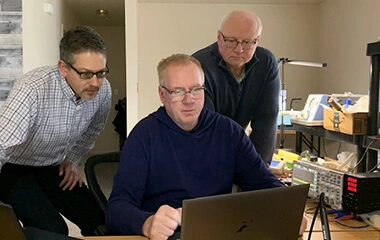Reinventing CPAP Therapy For Sleep Apnea

An estimated 30 million adults in the U.S. have obstructive sleep apnea. The leading treatment, CPAP therapy, offers patients the chance of a restful night’s sleep without waking up from obstructed breathing and a lack of oxygen. By blowing a stream of air into the throat, the CPAP machine allows patients to breathe easier.
However, patients’ long-term CPAP adherence varies widely, hovering near a worryingly low 50% in some populations, with many citing device comfort as a challenging roadblock.
Faced with the desire to improve patient comfort and adherence, William Noah, MD, began to question the way CPAP machines work.
Dr. Noah is the founder and medical director of Sleep Centers of Middle Tennessee with clinic locations in multiple cities including Murfreesboro, Franklin/Nashville, Clarksville, and Chattanooga. He is a founding member of the Middle Tennessee State University Sleep Research Consortium and the CEO of SleepRes, LLC.
A physician by trade, Dr. Noah sacrificed his spare time to research PAP devices and scour them for areas of improvement. He dove into the physiology and physics of the PAP circuit to better understand how the device works. He began to question what he knew about inspiratory and expiratory pressure.
Armed with a hypothesis, he built a sleep research lab in his basement during the pandemic and conducted his own research and interviews.
Despite the sleep field’s 30-year-old focus on the importance of greater inspiratory pressure, a discovery in Dr. Noah’s lab led him to suspect that PAP devices are not optimally engineered.
In 2021, he developed V̇-Com, a comfort device intended to improve PAP adherence based on the theory that lowering inspiratory pressure could increase comfort while continuing to treat obstructive sleep apnea – a theory that several pioneering CPAP engineers now support.